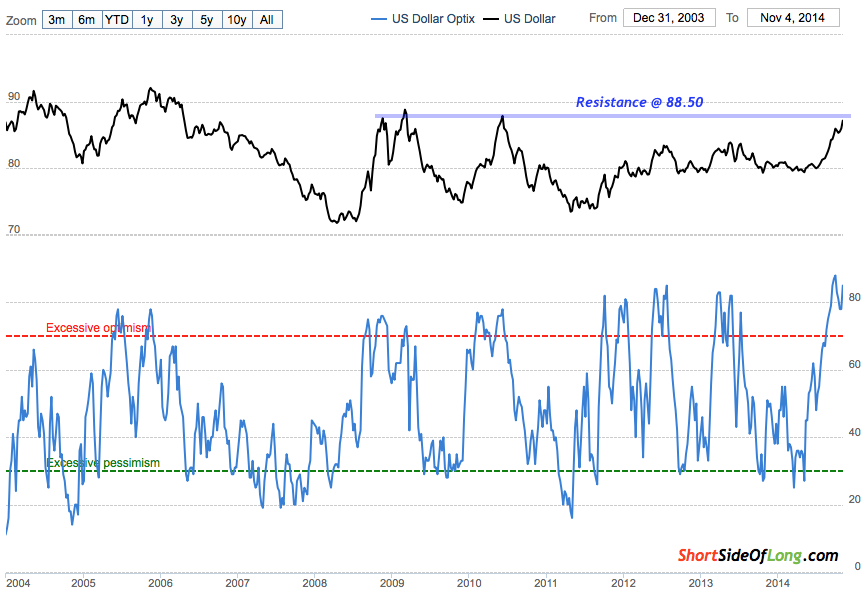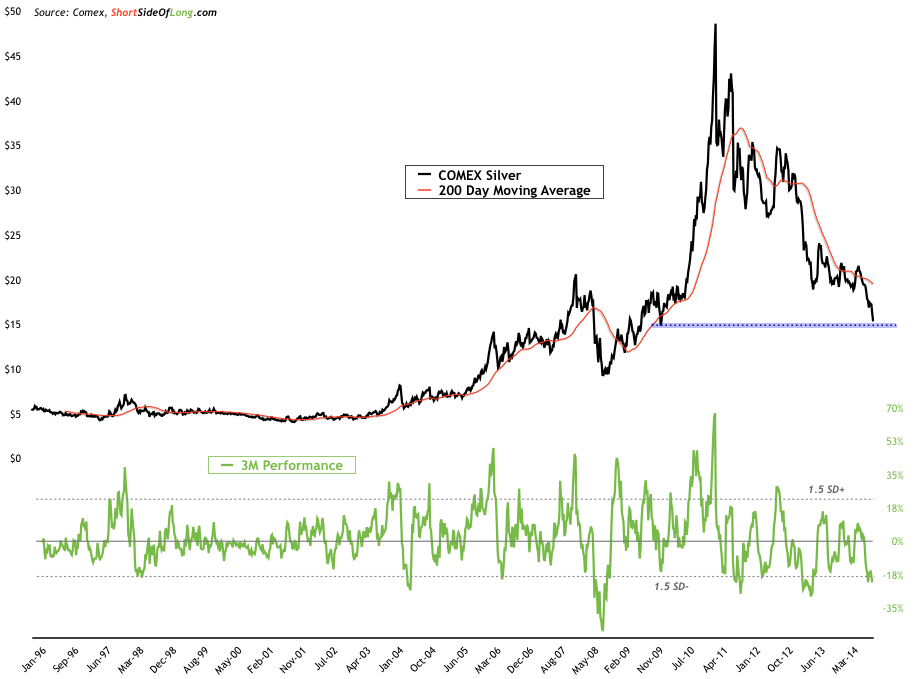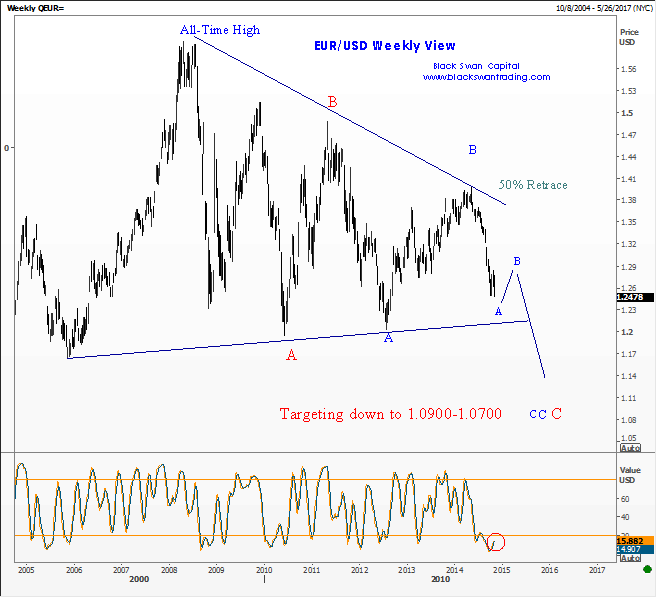Currency
 How to Manage Risk Easily and Effectively
How to Manage Risk Easily and Effectively
An observational study of 12 million actual forex trades made in the course of one year showed that traders are right more frequently than they are wrong. They win 59 percent of the time and lose only 41 percent.
Yet most traders lose money overall.
How is that possible?
Because their losing trades are 80% larger than their winning trades.
Wow, do you realize what that means?
It means there is a simple tactic to help you and anyone else become a successful trader.
Unfortunately, there is also a desire to “outperform” this simple tactic, and it is the exact reason traders lose money.
This desire to outperform is grounded in human nature.
In other words: You are the reason you lose … I am the reason I lose … and that “day trading” neighbor down the street is the reason he loses.
We want control – it’s our nature. So we convince ourselves we can do the impossible and outmaneuver the market.
Guilty as charged.
I started winning consistently only after loosed my grip. I stepped back and accepted this core truth: You don’t need to know what is going to happen next in order to make money in the market.
Before that, I let myself get in the way of success more times than I care to remember. But I’ve been doing this for 25 years because I’ve learned valuable lessons.
The most valuable lesson you can learn is risk management.
Practice risk management on every trade. Admit you don’t know where the market is going and that your trade is merely a probability bet. Your risk tolerance is simply the amount you’re willing to pay to play.
So get yourself and your ego out of the way and implement an effective risk management strategy with this one basic rule:
Use a stop-loss with every trade. Period.
That rule is hugely effective. And I have proof. My year-to-date results are exactly opposite those from the study I mentioned at the outset.
I am wrong more frequently than I am right. But I still make money trading (about 85% ROI so far this year and 84% in 2013).
How?
Because my average winning trade is roughly 177 percent larger than my average losing trade.
Do you realize what that means?
Using a stop-loss is a simple and effective risk management tactic. Here’s a trade alert I issued on Monday that’ll show you how I implement this tactic …

Note: Adjusted EUR/USD stop-loss to break even entry this morning…per Issue #1451
We want control over our success.
We can have it, but only if we understand success isn’t determined by controlling how we win as much as it is by controlling how we lose.
Once you control how you lose, you will win.
My results this year speak volumes to that claim. And I hope they speak to you too.
As a reminder, today you’ll receive ALL of my Black Swan Forex (BSFX) trade alerts, updates and analysis.
Tomorrow, I’ll be explaining another important facet of BSFX that also contributes to the success I’ve had the last two years. It’s about making adjustments on the fly so you can maximize profits and minimize losses.
-Jack

Buy EUR/USD at market [last price 1.2423] (Ed Note: Current Price 1.2384)
Knowing When and How to Make a New Trade
There are two things that may cause you to fail as a trader.
Fear and greed.
They are two sides of the same coin — each cripples your ability to make good trading decisions.
Fear of loss can keep you out of a good trade … or cut it short. Greed can push you into bad trades … or hinder your ability to control your risk. You must find a middle ground between these emotional extremes.
How do you keep emotion from controlling your trades?
You can’t eliminate your emotions. But you can control them if you develop an objective framework to exploit the emotional biases of other traders.
And then trust it.
After 25 years trading in financial markets, I can say trusting an objective framework is the clearest path to success.
You want a system that identifies high probability trades. And you want to pair that with disciplined risk management (more on that tomorrow.)
I have such a system.
I’ve honed it over the last two years. Year-to-date, it’s returned 85.4% for subscribers who followed the trade alerts verbatim. That follows an impressive 84% ROI in 2013!
The system uses Elliott Wave Theory to pinpoint trends and turning points. Those key levels dictate my trade decisions. What I might personally think about the euro, Japanese yen or the US dollar doesn’t matter if Elliott Wave analysis says otherwise.
Result: Highly objective trade alerts that make money consistently.
And that’s why you’re reading – to learn about those alerts. Let me share one I issued to subscribers yesterday …
 THREE PARTS OF A NEW BSFX TRADE ALERT RECOMMENDATION
THREE PARTS OF A NEW BSFX TRADE ALERT RECOMMENDATION
Part One: Entry
Tells you to buy or sell, the type of order (stop, limit, market) and suggested entry price
Part Two: Stop-Loss
Tells you suggested exit price if the trade moves against you
Part Three: Profit Target
Tells you suggested exit price if the trade moves in your favor
That’s all there is to it — just three parts in every new trade alert I issue.
Look it over. And be sure to tune in tomorrow when I’ll be sending you ALL Black Swan Forex (BSFX) alerts … LIVE and FREE. You’ll have the opportunity to see everything paying subscribers get to see.
I’ll also be covering another important facet of BSFX: Knowing When to Jump Ship.
A trade can be won or lost at entry, but that doesn’t discount the importance of proper risk management when trades are active. It could very well be the difference between a winning trader and a “treadmill” trader who goes nowhere.
Talk to you tomorrow.
-Jack
This is part of your “Insider’s Look” at Black Swan Forex (BSFX).
Remember:
On Wednesday, November 12th, I’ll be sending LIVE trading alerts and updates to all my readers.
Stay tuned.


We believe that the US Dollar is in the early stages of a multi-year bull market…BUT…short term…we think that the rally has run too far too fast and a correction is due. We do NOT recommend taking outright short Dollar positions in anticipation of this correction…but…given the sharp jump in FX option volatility the last couple of months…we think writing short-dated OTM puts against short currency positions would be a good idea. A correction in the Dollar rally would see gold and commodities bounce.
The US Dollar Index traded at new 4 year highs last week…up ~11% since July…it is now only ~1.5% away from hitting 8 year highs. CAD hit a 5 year low last week (8725)…it was at par just 18 months ago. The Yen hit a 7 year low last week…down ~32% since Abe pushed the BOJ to start devaluing the Yen (2012) as part of their plan to end 20+ years of deflation in Japan…the Yen is down ~8.5% in the last 3 weeks.
The Russian Ruble has collapsed despite efforts by the Russian Central Bank to “slow” the decline. It traded at lifetime lows last week…down ~40% since June…down 60% since February 2013. The sharp fall in oil prices and sanctions pressured the currency…but capital flight has hammered the Ruble.
WTI Crude hit 5 year lows last week…down ~30% since June…Gold hit 4½ year lows…down ~30% from its 2011 ATH…the major commodity indices hit 4 year lows…down ~30% from their 2011 ATH.
We’ve traded currencies for 40 years and believe that they “trend” more than other markets (who remembers leads and lags?)…that the trends go WAY further than seems to make any sense…and then reverse in “Vee” shaped turns. This tendency for currencies to go WAY further than seems to make any sense (plus our long-term bullish Dollar view) is the reason we do NOT recommend outright short Dollar positions. BUT…we note the HUGE ($45B) long dollar position in the futures market and the “beating” dollar-priced commodities have taken…and we “sense” a correction. Adding to our “sense” of a correction is a weekend report (Nov 9) from our long-time friend and excellent technical analyst, Ross Clark, warning of an “overextended” dollar…and a likely bounce in Gold.
Why has the US Dollar rallied against nearly all other currencies?
Market Psychology senses that it’s a deflationary world…especially outside America…despite all the Central Bank efforts…with the bigger risk being that the world becomes even more deflationary. Capital has become “less willing” to embrace risk and flows away from the “periphery” and back to the “center” seeking safety and opportunity. Capital flows beget even more capital flows with the risk that a trend becomes a torrent…and then a rout…witness the collapse of the Russian Ruble.
Capital flows driven by changing Market Psychology can be far bigger than trade flows…capital can continue flowing to America even if the USA runs huge trade deficits…even if a rising Dollar makes American products and services uncompetitive in world markets…we note that ~46% of the total sales of S+P 500 companies are generated overseas…a strong Dollar “should” make it tougher for these companies to generate overseas sales…but that in and of itself won’t reverse a Dollar rally driven by investment flows.
Divergent Central Bank policies favor the Dollar. Market Psychology prefers an America that is “less socialist”than the Rest of The World. Rising domestic energy production (carbon based and otherwise) favors the Dollar.The Republican gains in the recent mid-term elections favor the Dollar…In 1995 the Republicans took the House and the Senate…the Dollar rallied ~50% over the next 5 years…while the S+P 500 tripled!
The ebb and flow of market cycles also favors the Dollar. It was very “out of favor” after its 1995 – 2002 up-cycle and fell for the next 6 years while commodities boomed. It made an All Time Low in 2008 before the credit bubble burst…and rallied sharply for several months as stocks, commodities and interest rates fell. It chopped broadly sideways for 3 years but (we think) began a new multi-year up cycle in 2011 in sync with the end of the commodity market bull cycle.
Japan:
Mr. Kuroda…the head of the BOJ…has told the world that he is determined to break the deflationary mindset of the Japanese people…using extraordinary monetary policies. We have no doubt that he is determined…and he may succeed…but as we noted last week it feels like we just stepped into a Brave New World and the stakes are WAY bigger than they were before. Back in 1979 Paul Volker was determined to break the inflationary mindset of the American people…using extraordinary monetary policies…and he succeeded…ultimately igniting a 30+ year bull market in bonds…you have to wonder if there will be a 30+ year bull market somewhere if Mr. Kuroda succeeds….
Could it be stocks?
The Japanese Government Pension Fund announced that they will make a major shift in their portfolio holdings…going from 60% bonds/25% stocks to 35% bonds/50% stocks. Their actions will “green light” other major pension funds in Japan to make similar shifts from bonds to stocks. This is part of a global trend of pension funds “re-balancing” their portfolio mix. They have actuarial liabilities that they can’t achieve with bonds…so…all over the world pension funds are (and will be) switching from bonds to stocks. This will “favor” stocks.

US Dollar Could Correct
Since the start of the Northern Hemisphere summer, a major theme within the global financial market movements has been the strength in the United States Dollar. Being a global reserve currency, a rise in the greenback tends to have major implications for the rest of the world. In recent months we’ve seen weakness in shares around the world, we’ve seen commodities dropping like a rock and we’ve seen global currencies under heavy pressure. Majority of these assets have now become oversold from the short term perspective, especially Precious Metals discussed on the blog in yesterdays post (if you haven’t read it yet, click here).
Chart 1: Hedge funds & other speculators are all on one side of the boat

Source: Short Side of Long
US Dollar Index has gone up almost vertically, with major catalysts being divergence in monetary policies by major central banks. Federal Reserve has ended its recent round of Quantitate Easing, while European Central Bank is just starting its QE engine and Bank of Japan continues to remind the market that they will “print unlimited amounts of money”.
Price wise, we now have the Dollar Index reaching tis major resistance zone around 88.50. These levels were major selling points during the Global Financial Crisis of 2008 and the Eurozone Crisis and Greek Bailout in 2010. All of this is occurring while hedge fund positioning reaches net long extremes, as everyone is now on one side of the boat (refer to Chart 1). Simultaneously, confirming this outlooking is variety of sentiment surveys showing that just about everyone is a bull on the King Dollar (refer to Chart 2).
Chart 2: King Dollar is favourite currency of global investors right now!

Source: SentimenTrader (edited by Short Side of Long)
So with the Dollar being a favourite currency of global investors, just as equally the opposite side of that trade has very much suffered. Various inflation assets such as Euro, Crude Oil or Silver (just to name a few) have been beaten down within the same time frame. Therefore, it should not be a surprise that these assets have now reached major support zones (refer to Charts 3, 4 & 5), on extreme oversold conditions. As just as the Dollar happens to be everyones favourite investment right now, sentiment on these assets is negative with investors liquidating and running for the hills.
You shouldn’t positioning yourself based on what I think in this article. The bottom line for me is that I remain fully hedged in Silver, continue to hold naked short positions on Gold (giving my a net short PMs exposure) and remain in US Dollars for all my cash holdings. If you have been following the blog and the newsletter, you would have noticed that I opened these positions in July of this year.
While I am not yet closing these positions (I expect more Dollar strength next year), if I was a short term trader, I would be careful of a counter trend to occur for awhile. There are a huge number of Dollar bulls and a shake out could occur at anytime. In this case scenario US Dollar would correct and various stock markets (especially EU & GEMs), commodities and foreign currencies would rebound.
Chart 3, 4 & 5: Just as equally various inflation assets are now oversold!




 Quotable
Quotable
“But I don’t want to go among mad people,” Alice remarked.
“Oh, you can’t help that,” said the Cat: “we’re all mad here. I’m mad. You’re mad.”
“How do you know I’m mad?” said Alice.
“You must be,” said the Cat, “or you wouldn’t have come here.”
― Lewis Carroll, Alice in Wonderland
Commentary & Analysis
Euro: Too much hate?
The plunge in the euro has been a great trade for Black Swan Forex subscribers. We’ve been in and out of it many times on its trip lower. The currency has been whacked for good reasons. There are solid rationales to suggest the euro will continue to go a lot lower from here. I have seen analysts talking of parity to as low as 90 cents by the end of 2015. These rationales make sense to me:
1) Negative interest rates and lack of investment opportunity mean:
a. Equity money will go elsewhere
b. Fixed income money will go elsewhere
c. Foreign Direct Investment will go elsewhere
But, as much as we as traders would like it to be so, the impact of all these “knowns” rarely produces a straight-line move in one direction when it comes to investing in real markets, especially for those playing the game with leverage.
“As we know, there are known knowns; there are things we know we know. We also know there are known unknowns; that is to say we know there are some things we do not know. But there are also unknown unknowns—the ones we don’t know we don’t know.”
Former Defense Secretary Donald Rumsfeld
Two elements for euro bears to be concerned about:
1) Discounting – If I am sharing the above information about the reasons why the euro is going lower, the “known knowns,” you can bet these “knowns” are consensus views. And more often than not, consensus views are already discounted (embedded) in the price.
2) Surprise—We can forecast future events till the cows come home based on the rationales we know. But we should always be concerned about what we don’t know (why it makes sense to think risk first and return second). It is the “known unknowns” that hurt an account. It is the “unknown unknowns” that destroys an account. It is interesting, and no coincidence, these “unknown unknowns” usually surface just when everyone knows EXACTLY the guiding rationale driving a trend. Call this a Black Swan event. Call this getting totally fooled. John Percival simply calls it surprise. And it is surprise that moves prices the most, especially when there is a “crystalized consensus.”
I am not sure the euro is ready to bounce higher; but then again I am rarely sure of anything when it comes to investing. I do believe over time it goes lower—the rationales make sense as I said.
But, a significant correction based on some “known unknown,” e.g. Mr. Draghi is pushed out of the ECB leadership and replaced by Bundesbank President Jens Weidmann, is an example of how Mr. Market throws off riders; albeit and extreme example.
When you are riding a trend and you notice too much hate, or love, for the rationales by your fellow riders it is time to start getting a bit nervous. At the moment, there seems too much hate for the euro among the shorts.
EUR/USD Weekly: As you can see by my weekly view, I expect the euro to go a lot lower against the US dollar longer term. But it is extremely “oversold” on a weekly basis (red circle on the slow stochastic at the bottom pane of the chart), so caution may be in order as a decent bounce may materialize…

Thank you.
Jack Crooks
President, Black Swan Capital













